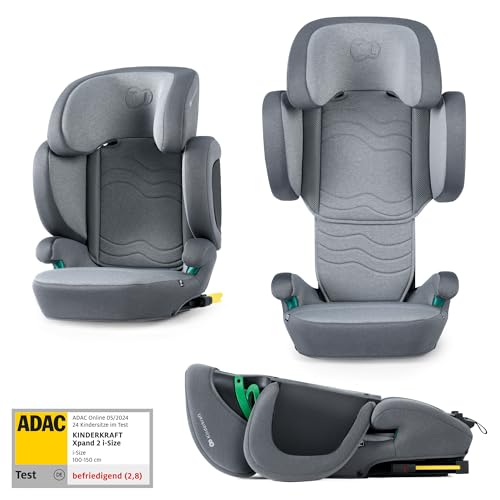The Most Effective Reasons For People To Succeed In The Prams Newborns Industry

The Comprehensive Guide to Choosing the Right Pram for Newborns
The arrival of a newborn brings both immense delight and a selection of choices that moms and dads need to navigate. One of the crucial purchases is selecting the ideal pram, which not just makes sure the baby's security but also provides convenience for parents. This guide intends to provide a thorough look into picking the appropriate pram for newborns, going over different types, functions, safety factors to consider, and upkeep ideas.
Comprehending the Types of Prams
Prams vary extensively in style and functionality, which can be frustrating for new moms and dads. Here's a breakdown of the most common kinds of prams readily available in the market:
| Type of Pram | Description | Pros | Cons |
|---|---|---|---|
| Standard Prams | Designed for babies, these prams normally have a deep bassinet. | Comfortable for newborns, Safe for sleeping. | Bulky and heavy, Hard to navigate in tight areas. |
| Travel Systems | A mix of a safety seat and a stroller, permitting simple transition between automobile and stroller. | Flexible and convenient, Cost-effective. | Might be heavier than standalone strollers, Not all parts are appropriate for newborns. |
| Light-weight Strollers | Compact and easy to steer, these are ideal for parents on the go. | Portable and easy to utilize, Generally more inexpensive. | Less cushioning, May not recline fully for newborns. |
| Convertible Strollers | Strollers that can adapt from a carrycot for newborns to a toddler stroller. | Multi-functional and lasting, Adjustable configurations. | Can be expensive, May need more upkeep. |
| All-Terrain Strollers | Built for rough surfaces, these strollers typically feature bigger wheels. | Long lasting for outside usage, Stable on various surfaces. | Much heavier and bulkier, Can be hard to steer inside. |
Key Features to Consider
When selecting a pram for newborns, several features can considerably impact usability and security. Here are vital features to bear in mind:
- Safety Harnesses: Look for a pram that consists of a five-point safety harness to guarantee the baby stays safe and secure while in transit.
- Reclining Seat: A fully reclining seat permits newborns to lie flat, which is necessary for their spine and respiratory health.
- Suspension System: A good suspension system offers a smoother trip, vital for the delicate bodies of newborns.
- Brake System: Ensure the pram has a trustworthy brake system to avoid accidents. Hand brakes or foot brakes can be efficient alternatives.
- Storage Space: Consider a pram with sufficient storage space for diaper bags, shopping, or other fundamentals.
- Weight and Foldability: Choosing a lightweight choice that folds quickly is vital for convenience, particularly for mass transit.
Security Considerations
Focusing on safety is critical when it comes to prams for newborns. Here are crucial security pointers to guarantee the wellness of your baby:
- Check for Stability: Make sure the pram stays steady when stationary. A broad base can offer increased stability.
- Prevent Overloading: Only location items advised by the producer in the storage basket; excess weight can result in tipping.
- Routine Maintenance: Inspect the wheels, brakes, and harness systems consistently to guarantee they function effectively.
- Buckle Up: Always utilize the safety belt, even for fast journeys, to prevent the baby from slipping or falling out.
- View for Age Recommendations: Follow the producer's guidelines concerning weight limits and age recommendations for security.
Maintenance Tips
Taking care of a pram guarantees its durability and security for your newborn. Here are vital maintenance suggestions:
- Regular Cleaning: Wipe down the pram frame and wash fabrics according to maker instructions to keep it sanitary.
- Check the Wheels: Check wheels for damage and tidy them regularly to avoid obstructed movement.
- Check Folding Mechanism: Ensure the folding mechanism operates smoothly without sticking or jamming.
- Oil Moving Parts: Apply the suitable lubricant to moving parts to guarantee peaceful and seamless operation.
- Shop Properly: When not in use, store the pram in a dry location to avoid rust and preserve fabric stability.
Frequently Asked Questions (FAQs)
1. For how long can a baby remain in a pram?
For newborns, it is typically advised to limit undisturbed time in a pram to about 1-2 hours to prevent problems with development and blood circulation.
2. Which pram is best for a newborn?
The very best pram for a newborn is one that offers a completely flat recline, has a good safety harness, and meets present security standards. Lots of parents prefer travel systems for their adaptability.
3. Can I use a stroller without a cars and truck seat for a newborn?
It's recommended to utilize a stroller with a flat or near-flat recline for newborns. Some strollers are just appropriate from six months and up, so inspect the producer's assistance.
4. When should I switch from a pram to a stroller?
You can move from a pram to a stroller when your baby can sit up individually, usually around six months, but this can differ. It's always best to consult the specific pram or stroller standards.
5. What is the very best way to clean my pram?
Always describe the manufacturer's guidelines, but usually, you can clean up fabrics with mild soap and water and clean down hard surface areas with disinfectant wipes.
Selecting the best pram for a newborn is a substantial decision that affects both the baby's convenience and the parent's lifestyle. By comprehending visit this web-site of prams offered, crucial functions to think about, security techniques, and maintenance tips, parents can make informed decisions that enhance their family's mobility and ensure the safety of their kids. Investing time in research now pays off in the long run for satisfying outings and cherished memories.

